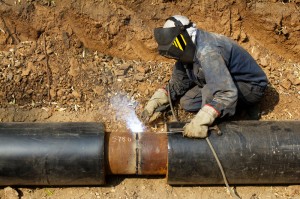A well constructed sales pipeline is a potent management tool. It helps:
- The sales rep manage her territory.
- The Sales VP manage the sales team.
- The senior executive team manage the business.
Here are four steps to construct a sales pipeline:
- Define sales stages.
- Assign closing probabilities and time frames for each stage.
- Populate the pipeline with sales reps’ deals.
- Create the sales forecast.
I will use a sample pipeline to take you through the process. Click here to see the sample report.
The sales leader (the Sales VP or CEO, depending on the organization) must design and manage the pipeline process. It should be standardized, giving sales reps limited latitude in assigning deals to specific stages or determining closing probabilities.
Four Steps to Building Your Sales Pipeline
Step 1. Define Sales Stages
At the first step of building a sales pipeline, the sales leader defines the stages. Here’s a possible set of stages for a software business:
Stage Sales Rep Activity #1 Lead Identifies lead #2 Qualification Determines if prospect meets target criteria (size, industry, etc.) #3 Meeting/Demo Demonstrates software – Determines need, budget, timing #4 Proposal Sends proposal if there is a good fit #5 Negotiation Negotiates pricing & terms #6 Closing Secures a signed contract
Step 2. Assign Closing Probabilities
Next, the sales leader assigns a probability of closing to each stage of the sales pipeline. This requires some research using the company’s past record of closing deals at each stage of the sales cycle. Wherever possible, it’s best to use actual records rather than guesses or rough estimates to identify what percentage of past proposals turned into closed business.
The sales leader should also use company records to determine the number of days the sales team took to close deals in each stage. For instance, a deal in Stage #3 (Meeting) may have a 30% likelihood of closing. Also, a Stage #3 deal, if it closes, usually takes 90 days to do so.
Stage Close % Days to Close Rationale for Close % #1 Lead 0% Too little information to make forecast #2 Qualification 10% 120 Prospect meets criteria but little else is known #3 Meeting/Demo 30% 90 Rep determines if prospect is serious #4 Proposal 60% 60 Only serious prospects get proposals #5 Negotiation 80% 30 Looks promising but could still fall apart #6 Closing 100% Very likely to get signed contract
Step 3. Populate the Pipeline
The sales leader can enter the stages and associated probabilities into the CRM system. Next, he or she would assign each open opportunity in the CRM system to its correct stage. The CRM system should now be able to generate pipeline reports on demand for each sales rep, territory, manager, or the company.
Step 4. Create the Sales Forecast
Finally, the sales leader creates the sales forecast by consolidating all of the deals from the individual sales rep pipelines into a summary. Below is the consolidated sales forecast for our sample pipeline.
The CEO makes strategic decisions and directs actions based on the sales forecast. So do other members of the executive team.
The CFO projects cash flow. The HR VP makes hiring decisions. The Production VP buys raw materials and schedules plant capacity. The Customer Service VP assigns the service technicians. The Marketing VP identifies market trends and adjusts product plans. The list goes on.
Sales Forecast ($000)
Stage # of Deals Potential Revenue Close % Weighted Revenue Days to Close 30 60 90 120 #2 Qualification 6 $1,700 10% $170 $170 #3 Meeting 4 $1,200 30% $360 $360 #4 Proposal 6 $1,800 60% $1,080 $1,080 #5 Negotiations 6 $1,600 80% $1,280 $1,280 TOTAL 22 $6,300 $2,890 $1,280 $1,080 $360 $170 Potential $ $1,600 $1,800 $1,200 $1,700
Accurate Pipelines: Everyone Wins
A complete and accurate sales pipeline helps everyone involved in sales, or with an interest in the sales “number,” do their jobs better. The Sales VP can manage more effectively. Sales reps can sell more effectively. Management can plan more effectively.
There is one added benefit for the Sales VP: job security. Nothing undermines a Sales VP’s credibility faster than inaccurate (usually overly optimistic) forecasts.
